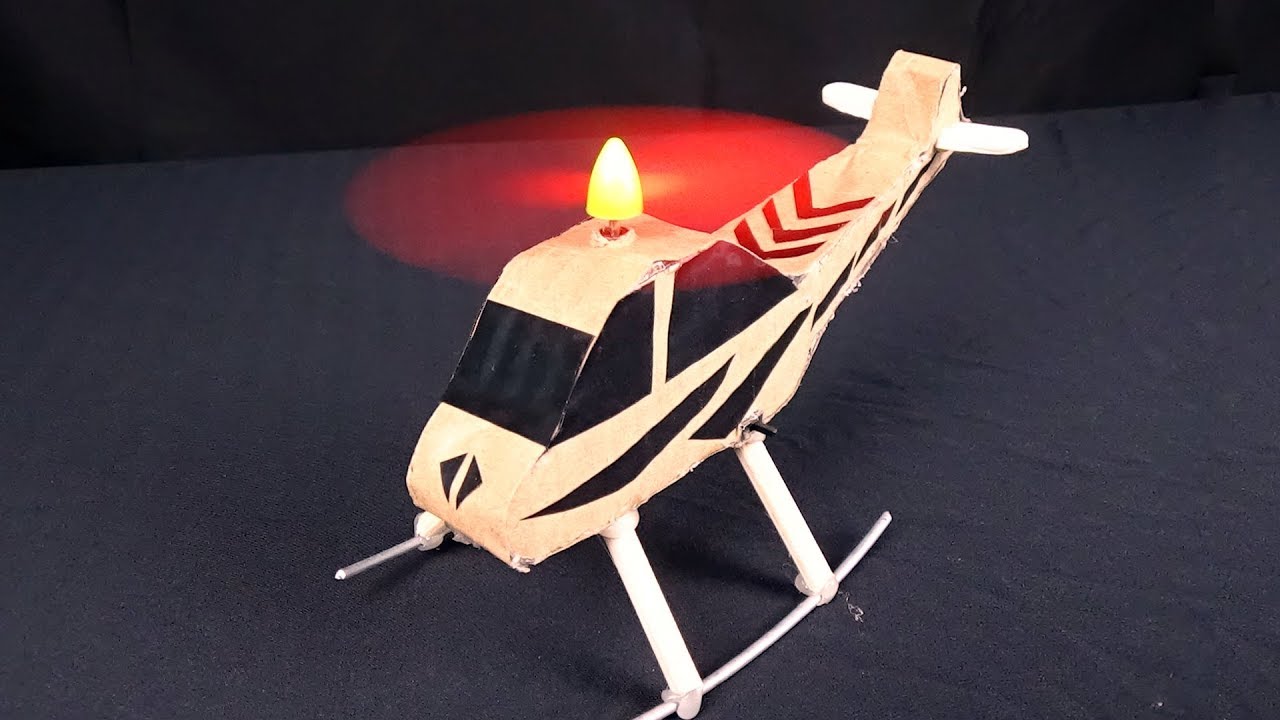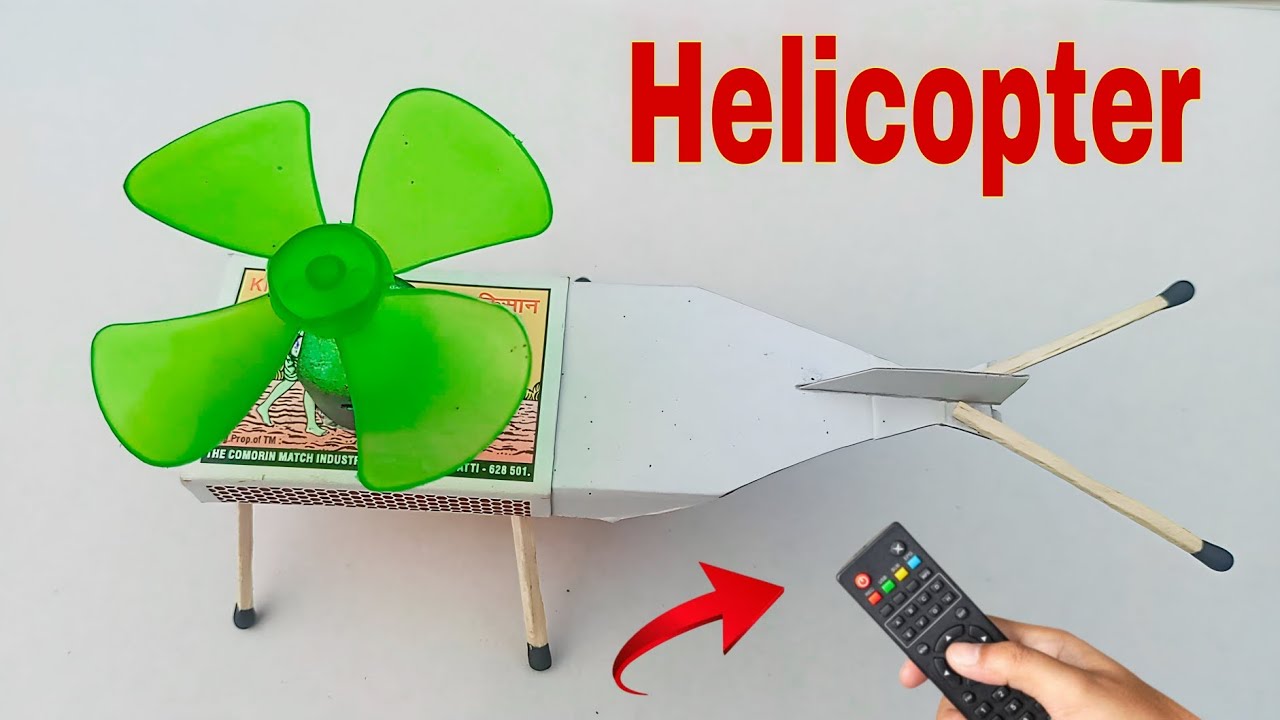Have you ever looked up at a helicopter flying by and thought, "I want to build one of those?" Well, you're not alone! DIY helicopter projects are an exciting way to merge creativity with engineering skills, and they cater to different skill levels, from beginners to seasoned hobbyists. Not only do these projects offer hands-on experiences, but they also provide a deeper understanding of aerodynamics and mechanics. Whether for educational purposes, for sheer fun, or as a challenge to impress friends and family, constructing your own motorized helicopter can be both satisfying and enlightening. So, let’s dive into the world of DIY helicopters!
Materials Required for Constructing a Motorized Helicopter

Before you begin your helicopter-building adventure, it's crucial to gather all the necessary materials. Having everything on hand will not only streamline the process but also enhance your overall experience. Here’s a detailed list of what you’ll need:
- Basic Frame Materials: You can use lightweight materials such as:
- Balsa wood
- Plastic sheets
- Cardboard
- Motor: Choose a small electric motor, typically a:
- Brushed DC motor
- Brushless motor (if you're feeling adventurous!)
- Power Source: You’ll need a reliable power source like:
- Rechargeable lithium-polymer (LiPo) battery
- AA battery pack (for simpler builds)
- Propellers: Select lightweight propellers that match your motor specifications.
- Control Components: If you want to navigate your helicopter:
- Electronic speed control (ESC)
- Receiver and transmitter (for remote control)
- Assembly Tools: Don’t forget the tools you'll need to bring your creation to life:
- Glue (hot glue works wonders)
- Soldering iron (for electrical connections)
- Scissors or a craft knife
- Ruler or measuring tape
- Wire cutter and stripper
Optional materials may include:
- Weight Balancing: Small weights or coins to help with stability.
- Decorative Elements: Stickers or paint to make your helicopter look unique!
- Safety Gear: Goggles and gloves, especially if you're using tools or hot glue.
With all these materials ready, you'll be equipped to embark on the thrilling journey of constructing a motorized helicopter. Whether this is your first project or just one of many, the satisfaction of seeing your creation take flight is worth every effort!
Also Read This: Is Farewell Available on Dailymotion? Finding and Watching Popular Content
3. Step-by-Step Instructions for Building Your Helicopter

Alright, let’s dive into the fun part—actually building your helicopter! Follow these step-by-step instructions carefully, and before you know it, you'll have your very own flying model. Ready? Let’s get started!
Materials You'll Need:
- 1 small DC motor
- 1 battery pack (preferably 9V)
- 1 propeller (the size depends on your motor)
- Lightweight plastic or balsa wood for the frame
- Wire for connecting components
- Electrical tape
- Scissors or a hobby knife
- Glue (hot glue works well)
- Optional: LED lights for added flair
Steps to Build:
- Design the Frame: Start by sketching out a simple design for your helicopter. A typical design includes a main body and two rotor arms extending out where your propeller will be attached. Using your lightweight material, cut out the pieces according to your design.
- Attach the Motor: Secure the DC motor to the center of your frame using hot glue. Make sure it’s firmly positioned because it needs to withstand vibrations while spinning.
- Connect the Propeller: Now, attach the propeller to the top of the motor. Ensure that it fits snugly; you don’t want it to wobble during flight. You might need to adjust the propeller blades to ensure they’re perfectly aligned for lift.
- Wiring the Circuit: Take your wires and connect one wire from the motor to the positive terminal of the battery pack, and another wire from the motor to the negative terminal. Use electrical tape to secure these connections, ensuring they are insulated and won’t short circuit.
- Final Assembly: Once everything is in place, double-check all your connections. You can also add LED lights for a cool effect during night flights. Attach them securely to your frame so they don’t interfere with the rotor.
- Test Run: Before going airborne, perform a quick test! Hold the helicopter securely and gradually connect the battery. If the motor spins smoothly and the propeller lifts off, congratulations! Your helicopter is ready for flight.
And there you have it! Your very own DIY helicopter. Make sure to take it outdoors where you have plenty of space to see how it performs. Adjustments might be needed based on how it flies, but that’s all part of the fun!
Also Read This: Heartwarming Stories for Everyone on Dailymotion
4. Safety Precautions When Working with Motors
While building your helicopter is an exciting project, safety should always be your top priority. Here are some practical safety precautions to keep in mind when working with motors and electrical components:
- Wear Safety Goggles: When cutting materials or working with small parts, it’s essential to protect your eyes from flying debris.
- Work in a Well-Ventilated Area: If you’re using glues or paints, ensure you’re in a space where there is good airflow to avoid inhaling fumes.
- Handle Electrical Components Carefully: Motors can get hot during use. Make sure to avoid direct contact with terminals and always switch off the battery when making adjustments.
- Keep a Fire Extinguisher Nearby: Electrical projects can pose a fire risk, so having a fire extinguisher close at hand is a good idea.
- Store Materials Safely: Keep all your tools and loose parts organized to avoid accidents, especially sharp tools that can lead to cuts or injuries.
- Be Aware of Moving Parts: When testing your helicopter, stay clear of the propeller area. It’s crucial to keep fingers and other objects away from any moving parts.
Taking these precautions will not only keep you safe but also ensure that your building experience is enjoyable and stress-free. Always remember that safety doesn't take a break—you should implement these rules thoroughly, both for your wellbeing and the success of your project!
Also Read This: How to Watch Explicit Content on Dailymotion: Accessing Mature Videos
5. Testing and Troubleshooting Your Helicopter
Congratulations on assembling your helicopter! It’s time to see how well it flies. But before you take it to the skies, let’s go through some steps on how to test your helicopter and troubleshoot any potential issues that arise. This part can be thrilling but may also come with a few bumps in the road, so let’s be prepared!
Initial Test Flight
Find an open outdoor space, preferably with minimal wind and large enough to accommodate your helicopter's flight path. Before taking off, do a quick visual inspection of your helicopter:
- Check all connections to ensure they are secure.
- Look for any loose parts or components.
- Ensure the battery is properly charged.
Once everything looks good, turn on your transmitter and then your helicopter. Gradually increase the throttle to initiate take-off. If it lifts smoothly and hovers at a steady altitude, you’re off to a great start!
Common Issues and Solutions
If your helicopter doesn’t fly as expected, don’t worry! Here are some common issues and how to troubleshoot them:
- Helicopter Won't Lift Off: This might indicate that your motor isn't receiving enough power. Double-check your battery connections and ensure your battery is fully charged. Also, inspect the motor to see if it’s functioning properly.
- Unstable Flight: If the helicopter wobbles or tilts, it might be a balance issue. Make adjustments to the weight distribution or trim settings on your transmitter.
- Short Flight Duration: If your helicopter quickly loses power, it might be consuming battery faster than expected. Ensure that the motor isn’t overworking and check for any mechanical binding.
If you face any other issues, take your helicopter back to the workbench, reassess everything, and make the necessary adjustments. Flying might initially involve a bit of trial and error, but that’s all part of the learning process!
Also Read This: How to Lose Belly Fat Fast with the Best Dailymotion Workout Routines
6. Tips for Enhancing Helicopter Performance
Now that you’ve tested your helicopter, you might find yourself wanting to enhance its performance. Fortunately, there are a variety of tweaks you can make to get the most out of your DIY model.
1. Weight Management
One of the key aspects of a helicopter's flight performance is its weight distribution. Here are some tips:
- Use lightweight materials for the body and rotor blades to reduce overall weight.
- Strategically place components (like the battery and motor) to ensure balanced weight distribution.
2. Upgrading the Motor
If you find your current motor lacks enough thrust, consider upgrading to a more powerful model. Be sure to select a motor compatible with your helicopter design and ensure it doesn’t require significant modifications to your frame.
3. Rotor Blade Adjustments
Rotor blades play a major role in your helicopter’s ability to lift and maneuver:
- Consider experimenting with different sizes or designs of rotor blades for improved lift.
- Ensure rotor blades are properly angled and balanced to optimize airflow during flight.
4. Regular Maintenance
Keep your helicopter in top shape by regularly checking for wear and tear:
- Inspect all moving parts for lubrication or reduction of friction.
- Regularly clean dust and dirt off to ensure optimum aerodynamics.
Enhancing your helicopter's performance may take a bit of experimentation, but the key is to enjoy the process. Each flight, new adjustment, or tweak you make will deepen your understanding of how this fascinating machine works!
Conclusion and Next Steps in DIY Aviation
Congratulations on completing your helicopter project! Building a model helicopter not only enhances your understanding of aviation principles, but it also fosters creativity and technical skills. Here’s a quick summary of what you have achieved:
- Hands-on Experience: Building a helicopter from scratch allows you to apply theoretical knowledge in a practical setting.
- Critical Thinking: Problem-solving during construction enhances your ability to troubleshoot and innovate.
- Technical Skills: You’ve gained valuable expertise in mechanics and electronics, which are essential in aviation.
As you wrap up this project, consider the following next steps to further advance your DIY aviation journey:
- Experiment with Modifications: Try changing the rotor size or motor type to see how it affects flight performance.
- Learn About Aerodynamics: Deepen your understanding of flight dynamics by studying how different designs impact lift and stability.
- Join DIY Communities: Engage with fellow enthusiasts in forums or social media groups where you can share experiences and ideas.
- Explore Advanced Projects: Once confident, tackle more complex builds such as quadcopters or fixed-wing aircraft.
By continuously learning and experimenting, you will enhance your skills and deepen your passion for aviation. Remember, the sky is not the limit; it's just the beginning of your DIY aviation journey!
 admin
admin








